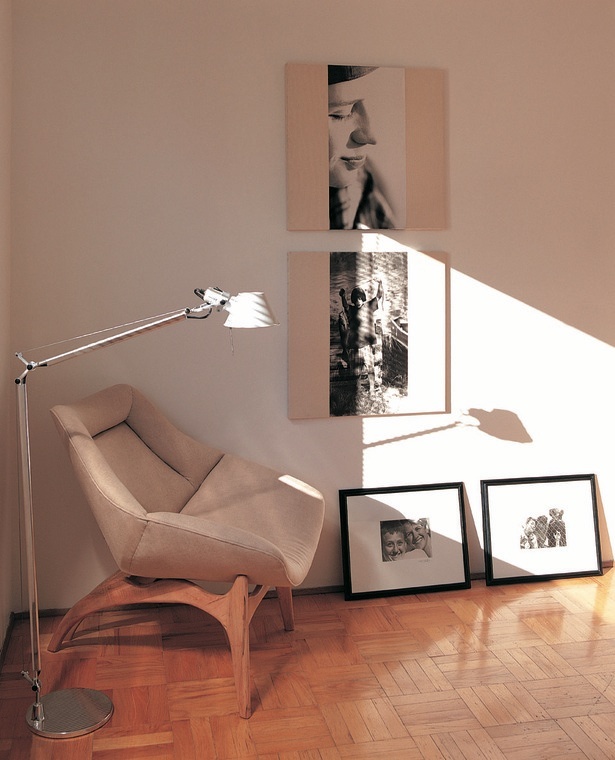Five Essentials for Your Home Office
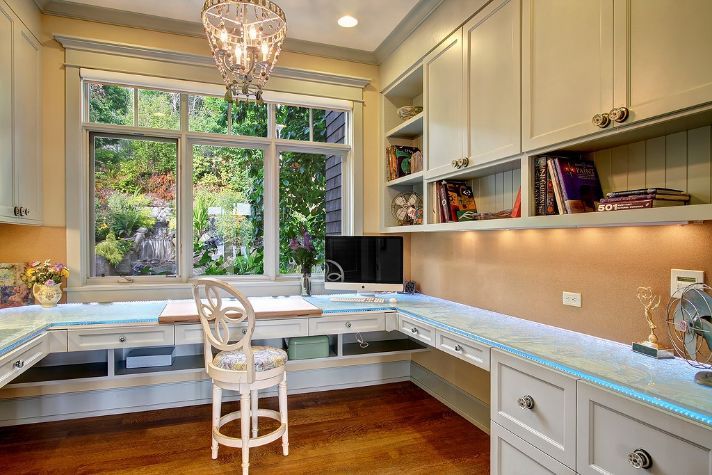
 Most people dream of working from home, but ask anyone who does it on a regular basis, and they’ll tell you how hard it can be to stay productive when you work where you live. The most disciplined telecommuters will tell you that you need a structured routine and organization to rise and grind and get into work mode.
Most people dream of working from home, but ask anyone who does it on a regular basis, and they’ll tell you how hard it can be to stay productive when you work where you live. The most disciplined telecommuters will tell you that you need a structured routine and organization to rise and grind and get into work mode.
Having a designated work space is quite possibly the most important piece to the WFH pie. Even if you live in a small space, you need to find a balance between home and office. People who work from home often have a difficult time separating work hours from their non-work hours because it’s so easy to keep at it late into the night. But maintaining a balance and shutting down the computer is important for overall wellbeing. What are some other must-haves for a successful home office? Here are the top five:
- Natural Light – Study upon study tells us that natural light is needed to boost productivity and mood. Make sure to set your desk up as close to a window as you can. If being near a window isn’t an option, a natural light lamp is the next best thing. It helps balance your body clock and leaves you feelings rested and refreshed.
- To-Do List or Planner – Start each day off by making a to-do list outlining what you need to get done before the end of the work day. Make sure to set a realistic time frame in which all of that should be completed, so you can check each one off the list and feel immense accomplishment once you’ve completed them all.
- Storage – If you have a big enough space, put in a large bookshelf where you can organize everything (think storage boxes). It reduces clutter and looks stylish. Using your walls and cabinetry is the most efficient use of space.
- Calendar – Many people tend to rely on digital calendars these days because of their convenience. When all of your devices sync together and pop up with reminders, you never have to worry about missing an appointment. However, many people find that it helps to keep a paper calendar handy too so you can easily view your whole month at a glance.
- Space for Inspiration – It doesn’t matter what field you work in, having a source of inspiration in your work space is essential. Whether it’s a photo of your family, your dream car, or that vacation you’ve been dying to take, having that inspiration right in front of you provides a constant reminder of why you do what you do.
For more information on Windermere Evergreen, please contact us here.
Home Security Systems: Protecting the People and Things You Value the Most
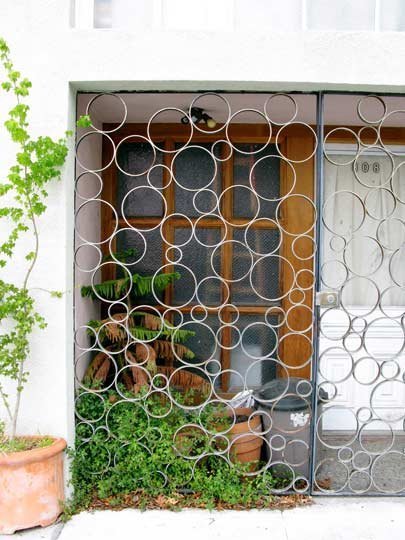
Home Security Systems: Protecting the People and Things You Value the Most
With warmer weather come open windows and extended vacations, so it should come as no surprise that the highest percentage of home burglaries happen during the summer months. With that in mind, now is a good time to start thinking about the security of your home. From old-school security tricks to new digital home monitoring tools, there are many options when it comes to keeping our homes safe. Read on to learn more about how you can modify your home and keep it safe from intruders.
Security bars and gates:
Sometimes the simplest security is just deterring people from trying to get in. While security bars across windows are a great way to keep intruders out of your home, they can be a real eyesore. Luckily, there are now options for decorative security bars that simultaneously protect your home while enhancing its beauty.
Upgrade you locks:
A poorly installed deadbolt can make it easy for an intruder to kick in your door. Start by making sure that your doorframes are in good condition and then look into getting a higher quality deadbolt. You’ll find everything from classic models with keys, or digital options that require passcodes or a fingerprint.
It’s also a good idea check all the locks on your windows. Some older models are easy to jimmy open with a little wiggling. For ground floor windows, you may want to consider double locks. It goes without saying, leaving windows open during the summer is a bad idea – especially those that can be easily accessed.
Exterior and interior home lighting:
Having your exterior lights on timers or motion sensors is a good way to deter nighttime snoopers. Add sensor lights to key entry points on your home, including the front door, back door, and/or basement entries. If you have an unused side yard, consider lighting there too. Keeping your home lit makes unwanted visitors weary of being seen.
If you will be gone from your home for an extended period of time, consider using timed lighting options in your home to make it appear someone is around. You can select timers for bedrooms or living areas. Also, you can program a radio to turn on and off for sound.
Alarm systems:
If you are considering an alarm, you have an array of options that vary from self-install motion detection kits to full-service home security systems. If you choose to do-it-yourself, you will want to install motion detectors on doors and windows – especially those that can be easily accessed on the ground floor. In most cases, these kits also offer a 24 hour call service for an extra fee.
Full-service security systems can include everything from an alarm system and panic buttons to and integration with your smoke detectors/ fire prevention system. These services are expensive up front, but usually have a reasonable monthly rate. And keep in mind, having a home security system installed can also reduce your insurance rates.
If installing an alarm system is cost-prohibitive or does not fit your lifestyle, consider purchasing stickers and a sign that state that your home is monitored by a trusted security system, and place them so they are visible at every entrance.
Security cameras:
Security cameras are readily available for home installation. You can install these in prominently viewed places to deter burglars. There are do-it-yourself install options, and professional systems that come along with monitoring services. There are even options that will work with your smart phone. If the cost for security cameras is too steep for your budget, you can purchase fake cameras to act as a visible deterrent for intruders.
Build your community:
Programs like Neighborhood Watch are very successful in some communities, by creating an environment where everyone is looking out for each other. Building close-knit relationships with your neighbors can go a long way in making you feel safe at home. Whether this is through a formalized program, or a shared agreement with your community, developing relationships with your neighbors is a great way to keep your home safe.
Sometimes the best part of security systems is the peace of mind that comes with knowing your home is protected. Many of our personal items can be replaced thanks to homeowners insurance, but you cannot put a price on feeling safe at home. How do you keep your home safe?
For more information on Windermere Evergreen please contact us here.
Affordable Tips To Up Your Home’s Curb Appeal

 You’ll never have a second chance at a first impression, so let’s make it count! When it comes to upping your home’s curb appeal, there are plenty of small changes you can make that have a big impact. And best of all, you don’t need to call in the pros or spend a fortune to get beautiful results. Below are some helpful and affordable tips.
You’ll never have a second chance at a first impression, so let’s make it count! When it comes to upping your home’s curb appeal, there are plenty of small changes you can make that have a big impact. And best of all, you don’t need to call in the pros or spend a fortune to get beautiful results. Below are some helpful and affordable tips.
A Well-Maintained Yard
Mowing: The first step to a well-manicured lawn is to mow it regularly. The experts recommending mowing high because mowing it too short can damage the grass and allow weeds to set root.
Weeds: To prevent weeds like crabgrass use a pre-emergent herbicide in early spring. These herbicides manage the weeds by stopping the seeds from sprouting in your lawn. Broadleaf weeds like dandelions can be stopped by applying granular weed control products.
Feeding: Lawns consume mostly nitrogen, so look for mixes of fast and slow release fertilizers; they will feed your lawn over time while keeping it lush and green.
Watering: Nighttime watering can result in long spans of moisture on the blades, potentially exposing your grass to disease. Consider watering your lawn in the morning – the sun helps dry out the blades throughout the day.
Flowers: You can quickly and affordably dress up your yard with colorful pre-made flower pots and containers. When placing your flower pots and containers remember that asymmetrical arrangements and staggering plants will provided the liveliest setting.
Dress up the Front Door and Porch
Paint: A fresh coat of paint in a pop color can give your home a well-deserved facelift. If you are hesitant to add a bright color to your front door, check out our article Energize Your Home This Winter With Bright Hues.
Replace Old Hardware: Clean off any dirty spots around the door knob, and use a metal polish on the fixtures. Change out house numbers for an updated feel, put up a wall-mounted mailbox, or add an overhead light fixture. Keep in mind that well thought through elements, instead of mix-and-match pieces, will add the most curb appeal.
Create Perfect Symmetry: Symmetry is one of the simplest design techniques to master and is the most pleasing to the eye. Maintain symmetry by flanking your front door with two sidelights (just make sure that your hardware matches); find two urn planters or a unique visual detail to put on either side of your door.
For more information on Windermere Evergreen, please contact us here.
New Year, Bold Home
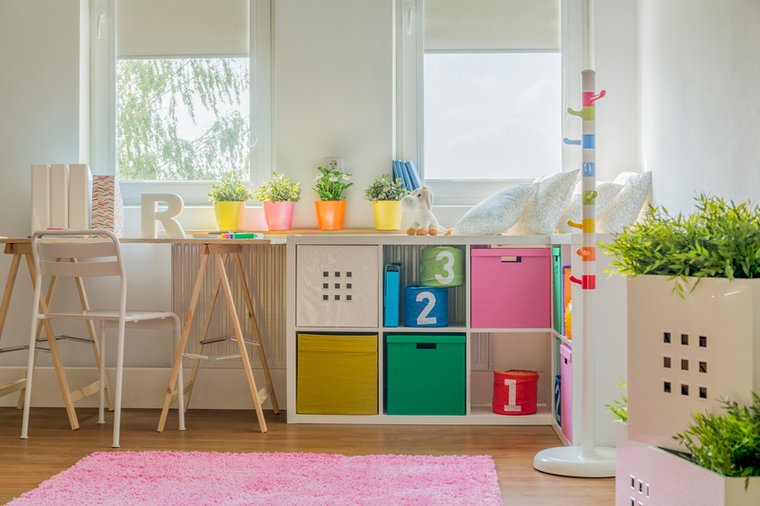

“New year, new me” is so 2017. We thought we would change things up a bit because frankly, 2018 deserves better and so do you. This is the year to be bold. In fact, if there was a color named “bold” we would recommend it for your kitchen remodel. Once a month we will be showing you a different way to go bold with your home. These will be easy, inexpensive changes to add character and life to various rooms and spaces.
Our first? Colorful, crafty storage. Many New Year’s Resolutions include decluttering your life. Not only is this great for your house, but it can also be very therapeutic. However, instead of putting the same old containers or storage back on your shelves, opt for a modification. For those of you who are more DIY, try painting the lids of mason jars your favorite bright color. If you are more of an online shopper than DIY queen, we found some storage options that are cute and simple: These are the perfect solution to keeping your kids playroom tidy, while still feeling fun friendly. Try these for your office space that feels a little dull and in need of inspiration. If you’d rather do something more permanent, paint the back wall of your storage shelves, it adds dimension and character. If you don’t want to permanently color your bookcases, try fabric or wallpaper. If you choose wallpaper, tie in the color with the items that are filling the shelves (hint: match to your mason jars).
We’ve mandated that 2018 is the year to be bold, but to also have fun. So start by adding some color to otherwise boring old storage spaces! If you go bold with your home each month this year, you can bet that the ending of 2018 will be sweeter than last.
For more information on Windermere Evergreen and our team, please contact us here.
3 Garden Alternatives for a Patchy Lawn


I’ve met with more than one client while standing on a struggling lawn. “I keep trying,” they tell me, “but the grass won’t grow.” I tell them that maybe this means there’s another option, something even better than a lawn. Maybe it’s time for a garden. And it’s as if I’d just told them the secret to eternal happiness and long life.
Still Have Hope for Greener Grass? Ask a Lawn Professional
Don’t keep tossing grass seed on your bare lawn. Instead, put a garden there, or at least plant something that has a better chance of surviving. Here are three situations where a languishing lawn may call for a new vision — a self-supporting garden that wildlife will love to call home.
BE Landscape Design, original photo on Houzz
1. Blazing sun. Whether it’s out in the open on a flat grade, on a slope or atop a hill, lawn just never does well in hot sunshine. It burns away each August, opening up holes for advantageous weeds to move in.
You could seed or plant drought-tolerant native grasses like sideoats grama and blue grama (Bouteloua curtipendula and B. gracilis) and little bluestem (Schizachyrium scoparium). Or try sedges like shortbeak and Bicknell’s (Carex brevior and C. bicknellii). And while you’re at it, get some flowers. If it’s a larger area, think self-sowers like upright prairie coneflower (Ratibida columnifera), black-eyed Susan (Rudbeckia hirta) and skyblue aster (Symphyotrichum oolentangiense). For smaller areas, ‘October Skies’ aromatic aster (S. oblongifolium ‘October Skies’) works well, along with pale purple coneflower (Echinacea pallida), purple and white prairie clover (Dalea purpurea and D. candida), many species of Baptisia, and more.
Try to create a base layer of sedges and grasses that will work to mulch and cool the soil, adding clumps or drifts of flowers among them for seasonal interest and pollinator action.
Attract Pollinators for a Productive Edible Garden
2. Ponding water. After a heavy — or even moderate — rain, water may collect in an area of your lawn, drowning grass for days or even weeks. When that water finally vanishes, you’re left with barren soil that’s both unsightly and open to weed invasion.
This sounds like an area where rain garden plants may work. These are the plants that thrive in the boom-bust cycle of spring and fall flooding with dry summers. Swamp milkweed (Asclepias incarnata), Virginia mountain mint (Pycnanthemum virginianum), Joe Pye weed (Eutrochium purpureum), switchgrass (Panicum virgatum), muskingum sedge and fox sedge (Carex muskingumensis and C. vulpinoidea), New England aster (Symphyotrichum novae-angliae), queen of the prairie (Filipendula rubra), white turtlehead (Chelone glabra), and Culver’s root (Veronicastrum virginicum) are all good options.
If it’s a large area and you want privacy, a shrub hedgerow is an option. Plant redtwig dogwood (Cornus sericea), red or black chokeberry (Aronia arbutifolia and A. melanocarpa), or elderberry (Sambuca sp.) — they will slowly sucker to form a massive bird and native bee habitat.
3. Dark or dappled shade beneath a tree. Trees are great: They cool homes, clean the air and provide for so much wildlife. Oaks (Quercus spp.), maples (Acer spp.), elms (Ulmus spp.) and willows (Salix spp.) are near the top in serving a diversity of pollinators and other insects, specifically, that use the leaves and blooms at different life stages. But grass doesn’t often grow underneath these tall trees — mostly because they cast dense shade.
If you have rich, moist to medium soil, there are many spring ephemerals to choose from: Dutchman’s breeches (Dicentra cucullaria), trillium (Trillium spp.), shooting star (Dodecatheon meadia), yellow trout-lily (Erythronium rostratum) and Virginia bluebells (Mertensia virginica).
For gardeners with dry clay soil, early meadow-rue (Thalictrum dioicum), zigzag goldenrod (Solidago flexicaulis), calico aster (Symphyotrichum lateriflorum) and wild geranium (Geranium maculatum) are solid choices. Sprengel’s sedge (Carex sprengelii) is a grass-like option.
If you don’t want a large bed of strictly plants, weave a path of mulch or stepping stones through. Place a chair or two, a hammock, or a potting bench.
It’s always important to carefully research the plants before you buy them to make sure that they suit your conditions. Clay soil is different from sand or rocky loam, and while some plants may do well in several kinds of soil and light conditions, others won’t. You may also prefer plants that create short drifts rather than tall ones, or vice versa, or clumping plants instead of aggressive spreaders.
When you take the time to carefully match the plant to the site and your region, you’re setting yourself up for more success and beauty with less maintenance — unlike sowing grass seed over the same area year after year.
By Benjamin Vogt, Houzz
For more information on Windermere Evergreen please contact us here.
 Facebook
Facebook
 Twitter
Twitter
 Pinterest
Pinterest
 Copy Link
Copy Link



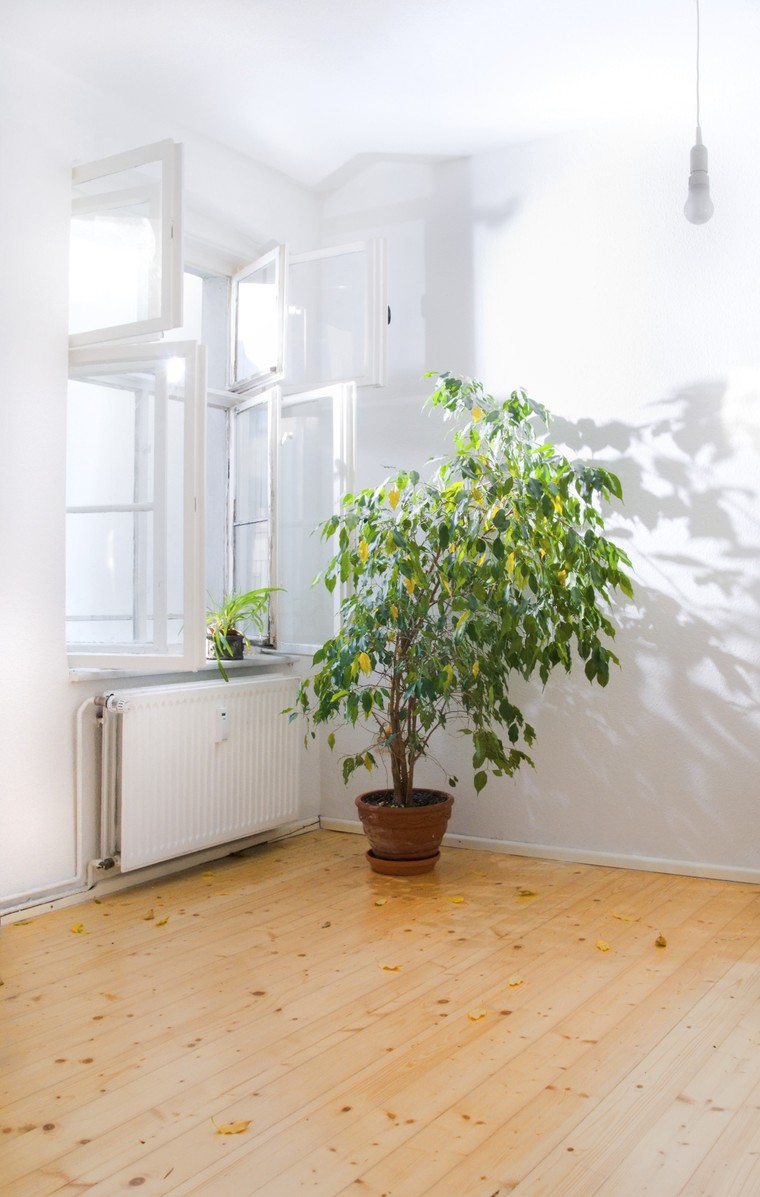
 Most of us tend to think of air pollution as something that occurs outdoors where car exhaust and factory fumes proliferate, but there’s such a thing as indoor air pollution, too. Since the 1950s, the number of synthetic chemicals used in products for the home has increased drastically, while at the same time, homes have become much tighter and better insulated. As a result, the
Most of us tend to think of air pollution as something that occurs outdoors where car exhaust and factory fumes proliferate, but there’s such a thing as indoor air pollution, too. Since the 1950s, the number of synthetic chemicals used in products for the home has increased drastically, while at the same time, homes have become much tighter and better insulated. As a result, the 
 Your kids have moved out and now you’re living in a big house with way more space than you need. You have two choices – remodel your existing home or move. Here are some things to consider about each option.
Your kids have moved out and now you’re living in a big house with way more space than you need. You have two choices – remodel your existing home or move. Here are some things to consider about each option.
 When it comes time to decide if you want to downsize, there are many thoughts and emotions that go speeding through your mind. Maybe you have already decided this is your home for the rest of your life. Your home was the perfect place to meet your needs when you were in an earlier cycle of life, and will be the ideal home for all the events you see happening in your next. If you are inclined to feel that the home you currently reside in may have out-lived its purpose, you may be struggling with some of the same thoughts and emotions my husband and I had when it came to the emotional and financially sensitive decision to downsize.
When it comes time to decide if you want to downsize, there are many thoughts and emotions that go speeding through your mind. Maybe you have already decided this is your home for the rest of your life. Your home was the perfect place to meet your needs when you were in an earlier cycle of life, and will be the ideal home for all the events you see happening in your next. If you are inclined to feel that the home you currently reside in may have out-lived its purpose, you may be struggling with some of the same thoughts and emotions my husband and I had when it came to the emotional and financially sensitive decision to downsize.